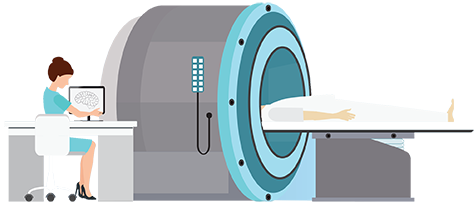

All radiology professionals who are registered with the ARRT must complete 24 Continuing education credits in a two year period to maintain registration. When you are first issued your certificate, you will remain registered until the end of your next birth month. At this point, you must complete the application for renewal of your registration. The ARRT will automatically send you an application for renewal approximately one month before expiration, so it is important that they have a current address for you. This is a once per year process of maintaining registration; however, every two years you must show proof of completion of your CE requirements.
Being certified through the ARRT is a way of showing that you have the necessary knowledge and skill to perform your job. Medical imaging technology is constantly changing and the demands of jobs within the field of radiology require that you continue to learn and grow within the field. Fulfilling radiology CE requirements will not only ensure your status with the ARRT, it will ensure you are maintaining a level of competence for yourself, your patients, and your employer. Your peers will also feel more comfortable working with someone who has demonstrated competence and knowledge both procedurally and ethically.
To fulfill your radiology CE requirements, you have three options. First, you can simply earn the 24 credits that meet the ARRT’s criteria. Another option is to pass a primary exam in another area that you are eligible for. Lastly, you can pass one of the post-primary exams. You must be sure that you meet the eligibility requirements to take these exams. If you choose to complete the 24 credits of radiology CE, you will need to be sure to complete a minimum of 12 credits from category A activities. The other 12 credits may be from category A or A+. If you are inquiring with a third party who carries out radiology CE coursework, they will usually delineate which group the course falls under. The A plus category is designated for course work geared toward R.A. (Radiologist Assistant) knowledge and curriculum. If you are going to take a test for primary or post primary areas, here’s the list of options:
Primary Exams:
Post Primary Exam Options:
RCEEM stands for Recognized Continuing Education Evaluation Mechanism. Basically, this is the mechanism that the ARRT uses to control the quality of radiology cme programs. Any organization who wants to offer these programs must have them submitted and approved by RCEEM or RCEEM+. You need to be sure that you are completing an activity that has already been submitted to and approved by RCEEM. RCEEM+ is for those programs at the Radiologist extender level such as Radiologist Assistant. If you are in doubt, it is recommended that you contact the ARRT and inquire about the specific program or course.
Category A credit can be granted by completing home course studies, directed readings with quizzes, webinars, college courses, and radiology certificate programs. There are several types of activities that constitute continuing education. For a full list, you may want to visit the ARRT website. You may also find programs that are aligned with your career by looking through list of online radiology programs and our full list of radiology schools, which list the program descriptions. The ASRT offers an opportunity through its directed readings of scholarly journals along with a quiz that is graded and posted online. There are hundreds of possible topics to study. Now is the time to decide what your future career goals are within the field of radiology and to tailor your continuing education around those goals. Maybe you have only been on the job for a few years and you want to master general radiography; there are several courses online and directed readings that can help you become even more proficient in your skills and knowledge. If you know that you want to learn more about another imaging modality, you may want to direct your continuing education in that manner. Perhaps learning more about MRI or mammography is aligned with your interests and would help you expand your functions and competencies.
The ARRT defines approved academic courses as any kind of formal course offered by an accredited postseconday educational institution in biological sciences, physical sciences, radiologic sciences, health and medical studies, communication, mathematics, computers, management, and education methodology. They even allow courses within the social sciences fields such as psychology and sociology.
For further assistance, we recommend you contact either the ASRT or ARRT directly with questions or concerns:
ASRT:
Tel: 800-444-2778, press 5
E-mail: [email protected]
ARRT:
Tel: (651) 687-0048 ext. 540